What is Reverse Innovation, and Is It For You?
When you think of innovation, you probably think of high-income countries that have both the technology and the financial means to make innovation happen. It’s rare that we associate low-income countries with innovation as these countries are mostly regarded as sole beneficiaries of innovations deployed by developed countries.
Many companies are reluctant to invest in developing countries, and those that decide to enter these new territories, have a low rate of success. There are many underlying reasons for this, from little understanding of the market, lack of infrastructure and connection with the local realities, to regulatory systems and collaborations with intermediaries.
However, a major cause for the struggle is that they stick to traditional strategies. They create downgraded versions of their products or make small tweaks hoping to successfully serve the new market with cheaper, lower-quality products.
Things have started to change, and both emerging and developing markets, are slowly becoming hotbeds for innovation, presenting new opportunities for both local and global companies to innovate. This is the better approach, the reversed one.
However, it’s not easy to go down that road. That’s why this article is all about reverse innovation, how it works (if it works), and what it takes to make it happen. We’ll also provide plenty of examples that can serve as inspiration and lessons to learn from.
Without further ado, let’s get to it.
Table of contents

What is reverse innovation
The interconnection between the world’s economies, cultures, and populations, or what we most often refer to as globalization has enabled exponential economic growth and prosperity for many people, but it also brought income disparity and inequality and put a strain on the environment. Glocalization promised to be the solution by incorporating the global ideas, technologies, products, and services into the local needs.
Innovation is a major force for economic growth, which could greatly improve the livelihood of people in developing countries. But glocalization does not equal innovation. Reverse innovation promises a better solution.
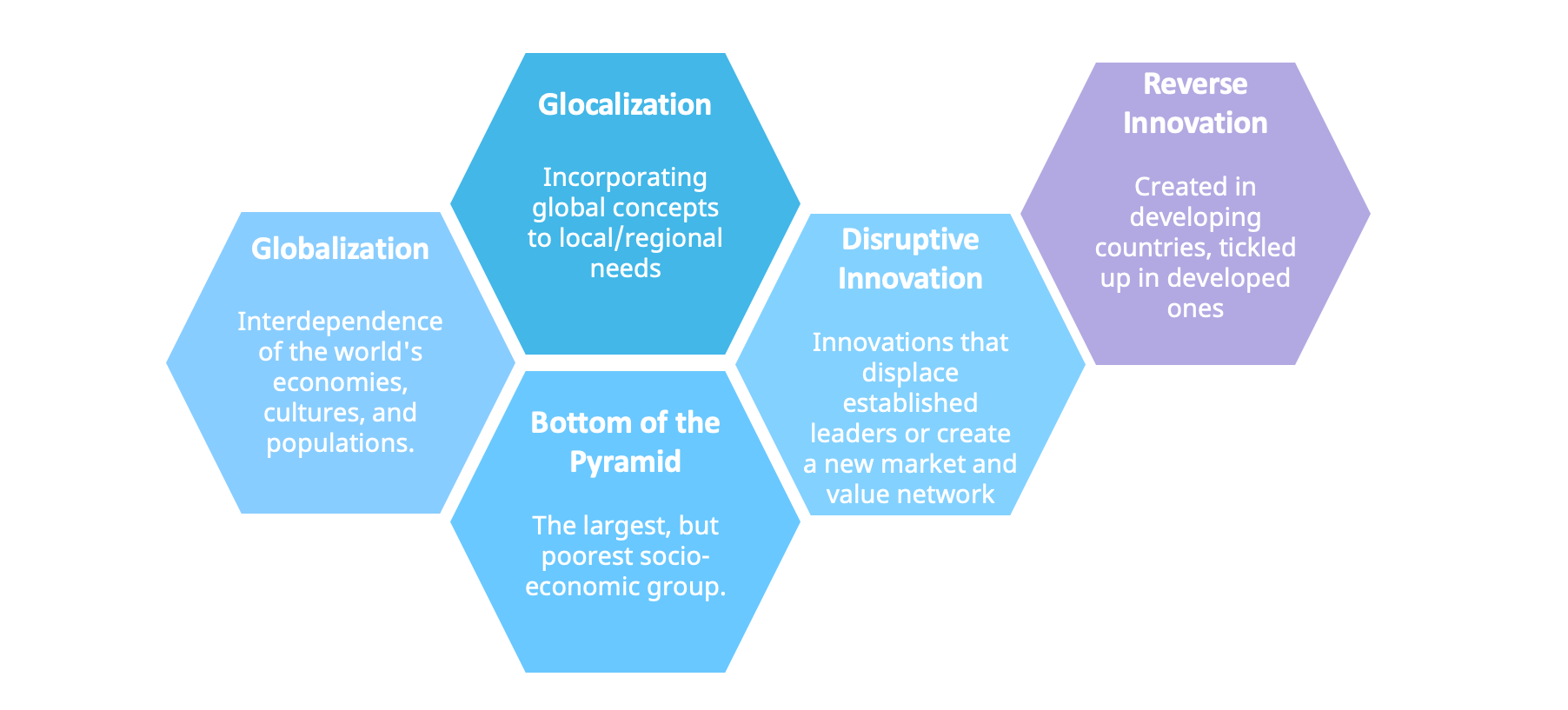
The concept has had its share of controversy and criticism over the years, and it has been called different things; bidirectional, multidirectional, frugal, and so on.
However, these are secondary thoughts we don’t want to ponder upon for too long, as our primary goal here is to shed some light on this less-known type of innovation that, in the current economic and social context, could have great potential.
So, what exactly is reverse innovation?
Reverse innovation refers to innovations developed in and for low-income, developing markets that are later successfully adapted and adopted in the high-income, developed markets.
The concept was introduced and popularized by the former Chairman and CEO of General Electrics, Jeff Immelt, as well as Vijay Govindarajan, Professor of International Business and Chris Trimble, both authors of Ten Rules for Strategic Innovators – From Idea to Execution.
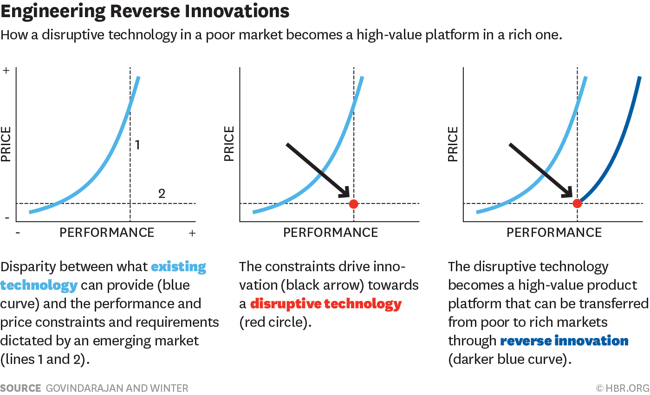
The model draws similarities with the Bottom of Pyramid socio-economic model, which in short aims to simultaneously provide growth for both society and businesses. The idea behind it is to decrease poverty at the base of the global wealth pyramid, which provides growth opportunities for global businesses.
However, the main difference between the two is that while reverse innovation is centered around innovative solutions that can benefit both developing and developed countries, the Bottom of the Pyramid (BOP) model does not rely on innovation.
As for the feasibility of the BOP model, some argue that it is very difficult for multinational companies to successfully implement it. Local realities showed that high margins are very hard to achieve when you want to improve the livelihood of millions of people.
To help you get a more solid grasp of the concept, we can also draw a parallel between reverse and disruptive innovation. As you might know, disruptive innovation, as defined by Clay Christensen refers to innovations that either displace established leaders in the market or create a new market and value network.
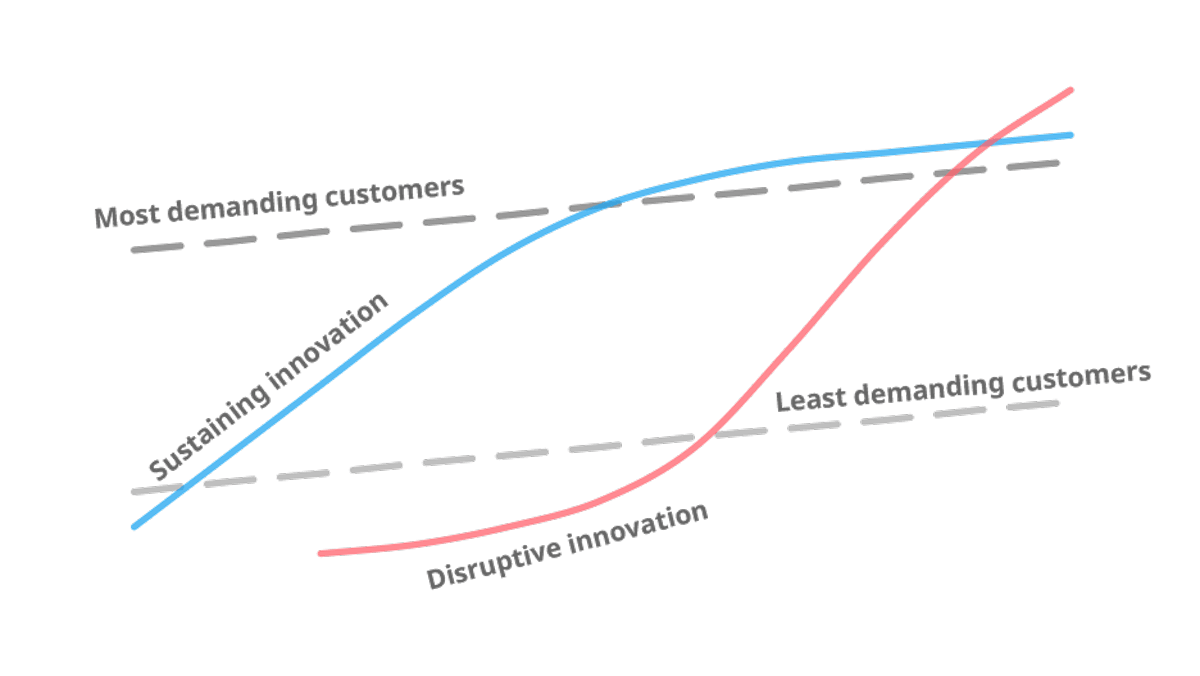
Disruptive innovation is similar to reverse innovation because they both enter at the bottom of a market through less expensive, more accessible solutions and move up to take over market leaders that have high-cost solutions.
Disruptive innovation can happen in developed, developing, or emerging markets, while reverse innovation refers strictly to those innovations that start in low-income countries and move upwards to high-income ones.
One last distinction to be made here is that reverse innovation can be created either by incumbents that want to achieve expansion growth or by local businesses that will export their innovations to the developed markets. Disruptive innovation, on the other hand, is rarely created by incumbents.
Now that we clarified what reverse innovation is and is not, let’s see what the benefits and reasons are to either consider it or be inspired by it.
The benefits of reverse innovation
Before going down the rabbit hole of reverse innovation, let’s take a step back and look at the context in which it takes place.
While it’s important to make the distinction between the emerging and the developing countries, the case of reverse innovation can apply to both. Emerging markets have a growing economy and growing consumer population, while the developing ones have weaker economies and smaller consumer population.
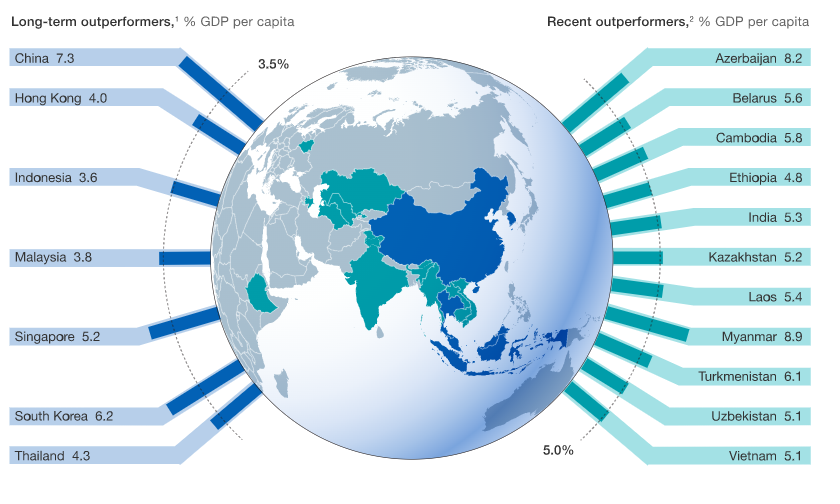 Source: United Nations Conference on Trade and Development; McKinsey Global Institute Analysis
Source: United Nations Conference on Trade and Development; McKinsey Global Institute Analysis
That being said, for simplicity and clarity, we decided to use both terms interchangeably, as the basic principles, challenges, and best practices of reverse innovation apply to both types of market.
-
Business growth opportunities
As economies of emerging countries are growing, so is their middle-class population and the purchasing power. In fact, it’s expected that by 2030, 1.3 billion more people will have higher purchasing power than today. This brings both opportunities and challenges.
At the same time, 2022 business insights on emerging economies showed that the global pandemic pushed millions of people back into extreme poverty, but it has also changed how businesses operate. Just like everywhere around the world, in emerging markets the digital technology adoption has accelerated, as has the demand for sustainable strategies.
An inspiring example comes from the Italian multinational energy producer and distributor Enel, which created Innovation Hubs all over the world to respond to emerging challenges through open collaboration with local talent, business incubators, universities, or government institutions.
It’s interesting to note that reverse innovation can also draw benefits from other types of innovation. Here we can see how open innovation plays a role in what could become reverse innovation. For Enel, open collaboration enabled the creation of innovative products like the hydrogen and lithium-based micro-grid system with electricity storage, in Chile.
-
Protect incumbents from being disrupted
Local companies in emerging or developing markets might not have the same financial resources and innovation capabilities as multinational companies, but they do have a major advantage.
They have a deep understanding of their market, the local problems, the risks, and opportunities in solving those problems. Multinational companies, on the other hand, have the capabilities, but unless they have local partnerships, subsidiaries, or units, they will have a hard time expanding in these areas.
So, it’s easy to see how this David and Goliath scenario could play in real life. It happened before, in the 70s and 80s when Japanese automakers disrupted the American automotive market.
A beloved and affordable car for Russians and people from the Soviet Block, but widely mocked for its quality, Lada was the best-selling car during its glory days. Renault’s CEO was inspired by Lada’s success which was outselling Renault in Eastern Europe, and teamed up with the Romanian car manufacturer Dacia, to produce Dacia Logan, an affordable family car.
Instead of just stripping off features to serve low-income consumers, like other car manufacturers tried to do and failed, Renault built a model with a simplified architecture and minimal components while keeping it reliable and energy efficient. Dacia became Renault’s best-selling car, especially in the context of recession and cost-conscious consumers.

Renault’s innovation was delivering a high-value product at a lower cost. Then it was reversed by developing and selling to high-income countries, an entire line of low-cost vehicles modeled after Logan’s technology platform. In 2021 Dacia reached the top 3 of European retail sales and the improvements they created through reverse innovation played a big role in this achievement.
Speaking of improvements, this is another way reverse innovation can benefit businesses.
-
Learning and improvement opportunities
As the previous example showed, reverse innovation can also teach you many lessons on the way.
In his reverse innovation playbook Govindarajan identifies five major gaps between the developing and the developed countries and he sees them as opportunities to innovate. Among these are the lack of infrastructure in developing countries and the loose regulations.
These might seem more like challenges than opportunities, but being less restricted in terms of regulations, means that there’s a lower learning curve because of the ability to do more testing, which leads to valuable insights.
Unfortunately, when there are less regulations there is also more room for unethical behavior, like in the mid-1950s with the development and trial of the birth control pill on women in Puerto Rico. Innovations that deal with healthcare and people’s wellbeing can be controversial, but it doesn’t mean there aren’t ethical ways in which these can be created in developed or emerging countries.
The Leveraged Freedom Chair (LFC) is one such example. The LFC is an all-terrain wheelchair designed by MIT for developing countries, to help people with disabilities move beyond pavement, as these countries rarely have wheelchair-accessible buildings and paved roads.
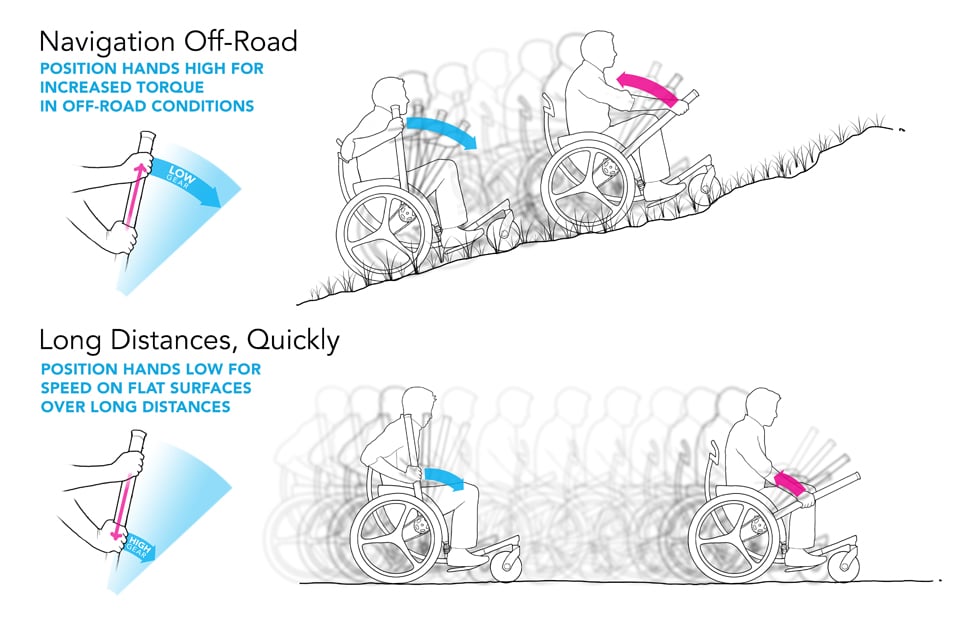 Source: wdo.org
Source: wdo.org
To get to the final product, the team learned from many tests and iterations. They had help from partnerships and users throughout the developing world. They tried prototypes in East Africa, Guatemala, and India and this led to important design modifications.
For the US and European countries, the LFC was upgraded to meet the realities of the local markets. It was collapsible to fit in the car, it had quick-release wheels that can be easily removed with one hand, and it was made from bicycle parts sourced locally. Off-road wheelchairs in the US are priced at over 5000$ while the GRIT Freedom Chair (the US version) could be purchased for half the price.
Had it not been for all the tests and learning experience in the developing countries, MIT couldn’t have designed a product for the developed markets that offered higher value at a lower price.
It’s impossible to get it right the first time around, especially in the case of innovative products. Prototyping, testing, and iterating on your ideas is essential and reversing innovation can increase the pace of these actions, improving the likelihood of success.
-
Frugality and constraints lead to innovative ideas
Both the Renault and LFC examples teach us something about the role of constrains in innovation. “Necessity is the mother of invention” and innovating in countries with limited resources and infrastructure, as well as legal constraints, capture the essence of the proverb perfectly.
When you start with clear constraints that really force you to rethink the way you’ve usually done things, you can come up with real out of the box innovations. Constraints force you to be creative and understand the essence of problem better than in a scenario where you didn’t have such limitations. This is a great way to create a competitive advantage.
Renault was constrained by the Eastern European market to deliver a product that could deliver value at a low price. Dacia Logan was first priced at 6500$ while providing a great size and trunk space, higher ground clearance and more reliability than competing products. For this, they used fewer parts and manufactured it in Romania where production costs are lower.
To crack the European market, Renault added extra safety features, and enhanced its look to appeal to consumers that could afford an increase in price. They priced it at 9400$ in Western Europe where in just one year they had a 19% increase in sales. Constraints in Eastern Europe pushed Renault to create an entirely new design, resulting in high value at lower cost.
While it always sounds good on paper, truth is that reverse innovation has been the exception rather than the rule. This is slowly changing, but there are still many challenges one will face in the process.
The pitfalls of reverse innovation
Innovation alone is always challenging, so understandably, successful reverse innovation, with its added complexity, is a hard nut to crack. The concept is subject to criticism as there is often overlap with other types of innovations and its lack of cohesiveness tends to hinder the reliable development from theory to practice.
But whether you want to give it a try or simply be inspired by reverse innovation, it’s good to be aware of its pitfalls.
-
High investments
It might be counterintuitive that reverse innovation requires high investment since we are talking about low-income countries where labor is less expensive and production costs are significantly lower.

In fact, operational expenses in emerging and developing countries can be higher because of the poor infrastructure and high distribution costs. What’s more, customer acquisition is not as straightforward as in developed markets as it relies a lot on communities and networks of people. Unless you have the right go-to market strategy, the logistics might decrease your profit margins considerably.
Of course, all these costs are relative to the size of the company, and whether you are a global company looking to expand and innovate in new markets, or a domestic one that might not have the financial means to scale innovation.
As a multinational company, you can’t create reverse innovation from a distance. You need local teams and partners, which require not just additional investment, but also a new mindset, a different approach, and great leadership, which makes us think of another challenge.
-
Radical changes
Innovation is about challenging the status quo, and this cannot be done by sticking to the old ways of doing things. Organizations that are ready to innovate abroad have reached a level where they understand the stakes of making innovation happen. However, when it comes to innovating in emerging or developing countries, radical changes are needed.
Companies have to rethink staffing, build local teams that have not just the business capabilities, and resources to innovate, but also the authority to decide on the strategy.
One solution that Govindarajan suggests is decentralization and focus on local markets. Most people and resources for reverse innovation should be based and managed locally. The Local Growth Teams (LGT), as he calls them, should have profit and loss responsibility as well as decision-making powers to decide on what products to develop, and how. Of course, this means that top management support and trust are a must.
-
Ethical and sustainability concerns
Trust is indeed essential, but not only trust that the local teams will work in the company’s best interest, but also trust that their innovations are in the society and environment’s best interests. Which is not easy to achieve, as reverse innovation can also backlash.
There’s an ongoing critique of organizations that use emerging and developing countries as incubators for innovations in the worst sense of the word. The legal and regulatory barriers we mentioned above are a double-edged sword. They can facilitate more rapid changes that are not possible in developed countries.
At the same time, they also enable them to take advantage of loose regulations and dump on developing countries all the downsides of large-scale production or treat them like Guinea pigs for experimental products.
To address this issue, global companies should collaborate with local businesses to understand the local culture, customers, as well as their needs, and problems better. This shows not just that they are sensitive to local issues, but that they truly want to come up with the best solutions to their problems, and not just to take advantage of the situation and win big money.
-
Difficulty in entering the developed markets
Many of these challenges concern mostly multinational companies looking for opportunities to innovate in developing or emerging countries. On the other side of the fence, though, the small, local businesses can find it hard to scale their innovations, even if they are disruptive.
On one hand, they might not have the resources to scale to developed countries, and on the other, they face cultural bias and culturally embedded preconceptions. One such example was the oral rehydration therapy (ORT), an innovation created in Bangladesh in the late 60s which saved millions of lives.
It took over twenty years for this innovation to catch up in the developed countries, where doctors opposed this solution in favor of the more expensive, intravenous one, seen as more scientific.
But there are also success stories which prove that innovations from emerging countries can be successful in developed markets. The Chinese car manufacturer BYD is showing a lot of promise as it surpassed Tesla sales in the first half of 2022. Even though in terms of profit Tesla is currently still leading, BYD has the potential to disrupt Western markets as it provides solid value at a lower cost.
Lessons from success stories
Most companies that choose to outsource production to emerging or developing countries do it for cost-efficiency. Those with an innovative approach, though, see potential beyond costs, and they reap the benefits in the long term. How did they get there and what can we learn from their experience? Let’s briefly look at three companies that successfully created reverse innovation.
-
General Electric
Maybe one of the most cited examples of reverse innovation is General Electric, as they are also the one that popularized the concept. GE Healthcare was known for manufacturing high-end healthcare products like X-ray machines, ECG, MRI scanners, or CT scanners that were sold for thousands of dollars in Western countries.

In 2005 they started working on an ECG machine destined for the Indian market. So, among other things, it had to be affordable, durable, and portable. As there were other low-cost solutions on the market, their big challenge was to create a product that was both high quality and low cost. Their traditional approach in devising these products would not work in this context, so they had to find a new approach.
In 2007 they launched the MAC 400 portable ECG and after some bumps on the road, they managed to get the product rolling through direct sales. The product quickly became successful in Europe as well, with sales figures equivalent to those in China and India. A better version soon followed with the Mac i being lighter, equipped with a smaller printer, and had an even lower price.
In 2009 GE also launched the Lullaby baby warmer developed to improve infant care in India. It’s now used in over eighty countries around the world, developed markets included.
The success of these products taught GE that constraints can lead to out of the box thinking which brings great results, as long as you keep in mind the value you want to create for the customer.
-
P&G
Another success story comes from P&G and its cough syrup with honey, which was first developed for the Latin American markets. They learned from market research that people in Latin America preferred homeopathic remedies for colds and coughs. So, they replaced artificial flavorings in their medicine, with natural honey. They first introduce VickMiel in Mexico and later expanded to Brazil. Over the years they successfully rolled out the product in the US and Europe.
The new product gained traction in developed markets as it was sold at a lower price than Vicks, their brand in the US and Europe. The lesson here is that different cultures have different preferences and it’s important to understand the demographics of both developing and developed countries, as these can differ significantly. Reverse innovation should create an offering specifically tailored to the needs of the markets you want to serve.
-
Harman
Harman, a prominent player in the automotive infotainment market, successfully created reverse innovation when they looked for new opportunities to expand their market reach.
At the time, they were supplying infotainment systems for premium cars, so their products were focused on features, technology, and great engineering. When they first tried to cater to the mainstream market by stripping down their product to the bare minimum, the strategy just didn’t work.
They had to go back to the drawing board and figure out a new approach. The solution was to create a new center in India, where the products would be developed.
They didn’t rethink just the systems, but also how they design software, and had to radically change the way the company operated. The new product had to be flexible and modular to easily adapt to different needs while meeting ambitious cost targets.
Traditionally, their German engineering teams worked in subdivisions, each for a specific technology. While efficient for incremental improvements, this model was costly and rigid.
To enhance flexibility and reduce costs, the teams in India were organized around functions they would develop, which made it possible to come up with, in just one year, an entirely new architecture for the infotainment system. It was still meeting high quality standards, but also met cost and price targets and was flexible enough to scale to the car manufacturers’ different needs.
The most important lesson to learn from Harman’s example is the crucial role of a good baseline to help streamline reverse innovation and scale it to developed markets. Technology has evolved since they first started, so it was imperative to have in place a systematic approach for innovation, as well as the processes and governance needed to maintain a fast pace of innovation in their Indian center.
The new organizational structure, as well as the new design methods ensured continuity to the new units and allowed the company to thrive in both developed and developing markets.
Conclusions
Reverse innovation might not be accessible to all organizations, but that doesn’t mean that there aren’t things to learn from this framework.
Even though the topic has generated more academic research than tangible results, it doesn’t mean you can’t get the best out of it.
So, remember that this is just one avenue of innovation that is emphasizing an essential thing: constraints and limitations will force you to find better solutions and come up with out of the box ideas and innovations, whether they are reversed or not.
At the same time, trying to innovate in these markets can also help you distill down ideas to fundamental truths, and see new solutions to existing problems. This is what first principles thinking is all about, and a foundation for systematic innovation.
Whether you decide to go to emerging or developing markets, or you are already in one, in the end the same thing applies: to be successful you have to truly understand your market and customers, their diverse needs, and aspirations.
If you want to learn more on how to make innovation happen and navigate the challenges, we created The Innovation System program together with our customers who work daily on innovation. The online course is a coaching program that dives deep into all things corporate innovation through 26 video lectures, exercises, tools and templates.







